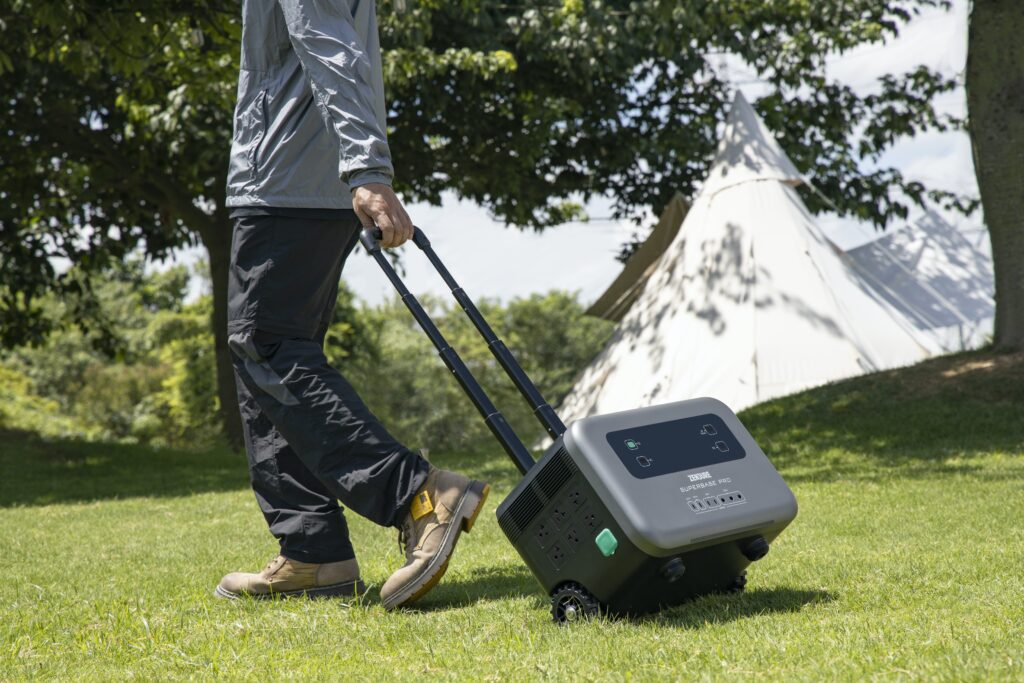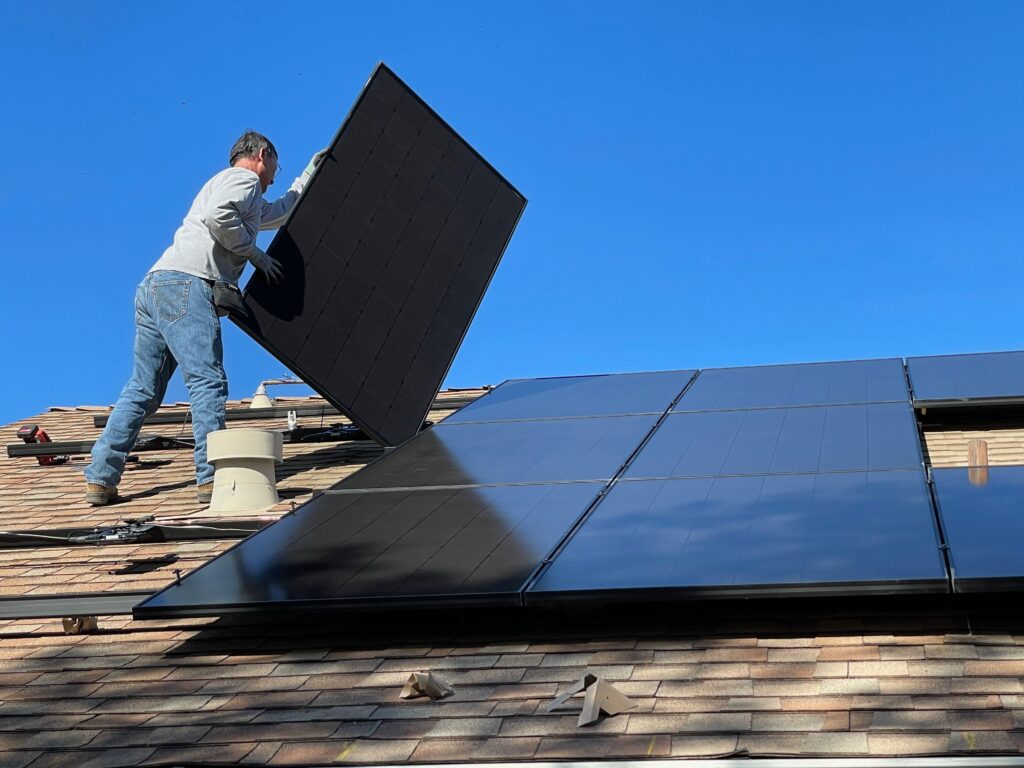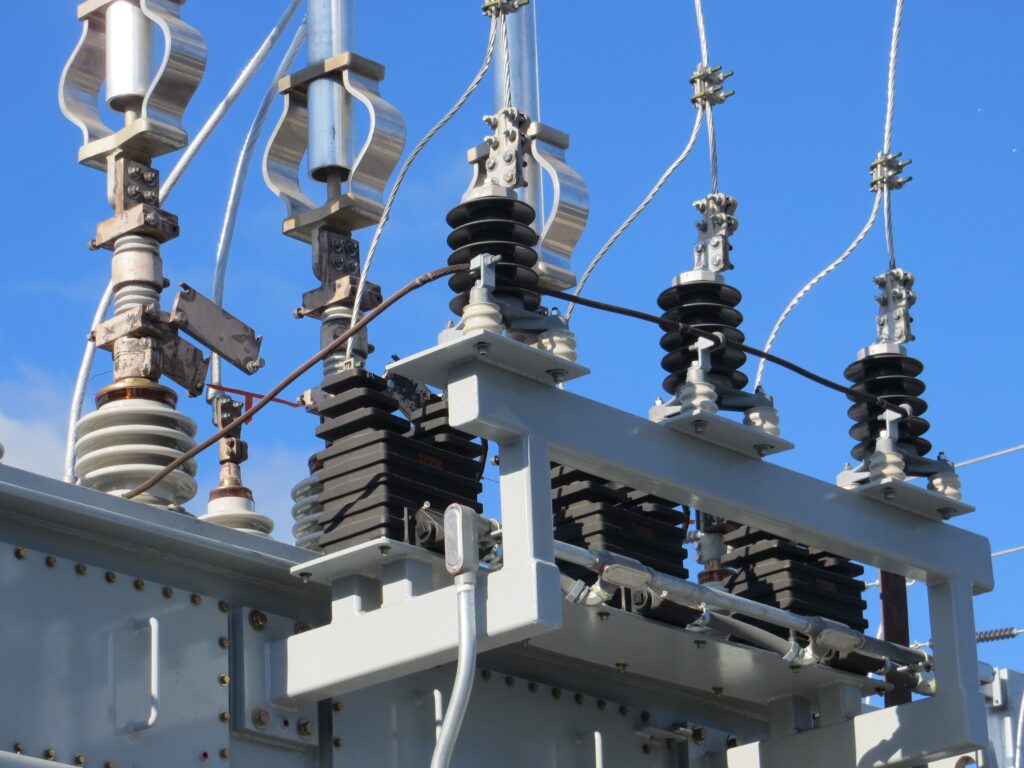Have you ever wondered how long a portable generator can run without needing a break? Well, in this article, we will explore the answer to that question. Portable generators offer a convenient source of power during emergencies or in remote areas, but it’s important to know their limitations. We will discuss the factors that determine how long a portable generator can run continuously and provide some useful tips to maximize its lifespan. So, let’s get started and unravel the mystery behind the endurance of portable generators!
Understanding Generator Work Cycle
Basic operation of a generator
A generator is a device that converts mechanical energy into electrical energy. Its basic operation involves an internal combustion engine which runs on fuel, such as gasoline or propane, to rotate a rotor inside the generator’s stator. This rotational motion creates a magnetic field, inducing an electrical current in the stator coils. The generated electricity is then available for use through the generator’s outlets.
Understanding work cycle and rest times
Generator operation is divided into work cycles and rest times. The work cycle refers to the duration during which the generator is actively providing electrical power. Rest times, on the other hand, are the intervals during which the generator is not in use. The work cycle and rest times are important to ensure the longevity and efficiency of the generator. Prolonged work cycles without adequate rest can lead to overheating, increased fuel consumption, and potential damage to the generator.
Differentiating between running time and working time
It is important to differentiate between running time and working time when discussing the continuous operation of a portable generator. Running time refers to the total duration the generator has been in operation, including both work cycles and rest times. On the other hand, working time specifically refers to the duration during which the generator is actively providing electrical power. Understanding this distinction is crucial when assessing the capabilities and limitations of a generator’s continuous operation.
Manufacturer’s Guidelines on Generator Usage
Understanding the role of manufacturer guidelines
Manufacturer guidelines serve as a valuable resource for understanding the safe and optimal usage of a portable generator. These guidelines provide information on various aspects of generator operation, including recommended run times, maintenance procedures, safety precautions, and more. Following the manufacturer’s guidelines ensures that the generator operates efficiently, minimizes the risk of damage, and ensures user safety.
Typical manufacturer recommended run times
Manufacturers often provide recommended run times for their portable generators. These run times are based on a combination of factors such as the generator’s design, fuel capacity, and intended use. While the specific recommended run times may vary, it is common to see guidelines specifying a continuous run time of 8 to 12 hours before allowing the generator to cool down. It is essential to adhere to these recommendations to avoid overstraining the generator and to allow for maintenance and inspections during the rest times.
Safety measures as provided by the manufacturer
Manufacturer guidelines also provide crucial safety measures for operating a generator continuously. These often include recommendations for proper ventilation to prevent carbon monoxide buildup, grounding the generator to prevent electrical shocks, and ensuring safe fuel storage practices. Additionally, guidelines may outline precautions for avoiding contact with hot surfaces, proper storage when not in use, and regular inspections to identify any potential safety concerns.

Factors Affecting How Long a Portable Generator Can Run Continuously
Type of fuel used
The type of fuel used in a portable generator plays a significant role in determining how long it can run continuously. Different fuels have various energy contents, which directly impact the generator’s runtime. For example, gasoline typically has a lower energy density compared to diesel fuel, leading to shorter run times for generators operating on gasoline. Similarly, propane can provide longer run times compared to gasoline due to its higher energy content.
Size and capacity of the generator
The size and capacity of a portable generator also have a direct influence on its continuous run time. Generally, larger generators with bigger fuel tanks have the ability to run for longer periods without refueling. This is because they can store more fuel, which extends their run time. However, it is important to note that larger generators also tend to consume more fuel per hour of operation due to their higher power output. Therefore, the actual run time may vary based on the specific generator model and its efficiency.
Load on the generator
The load placed on a generator significantly affects its run time. The load refers to the total electrical power being drawn from the generator to operate various appliances or equipment. A higher load results in increased fuel consumption and shorter run times, while a lower load allows the generator to operate for longer durations. It is important to understand the power requirements of the connected devices and appliances to balance the load on the generator effectively and optimize its run time.
Environmental factors affecting run time
Environmental factors, such as temperature, altitude, and weather conditions, can impact the run time of a portable generator. Cold temperatures can decrease the efficiency of the generator’s engine and lead to increased fuel consumption. Similarly, high altitudes can affect the engine’s performance and reduce the generator’s power output. Adverse weather conditions, such as heavy rain or snow, may require additional precautions to protect the generator and can limit its continuous operation. It is crucial to consider these factors when determining the feasible run time of a portable generator.
Role of Fuel in a Generator’s Running Time
Different types of fuel
Portable generators can run on various types of fuel, including gasoline, diesel, natural gas, and propane. Gasoline is commonly used due to its availability, but it generally provides shorter run times. Diesel tends to offer longer run times and is more fuel-efficient, making it suitable for extended use. Natural gas and propane are often used in standby generators and provide longer run times compared to gasoline. The choice of fuel depends on factors such as availability, cost, and individual requirements.
Relation between fuel type and running time
As mentioned earlier, the type of fuel directly affects the running time of a portable generator. Fuel energy density, combustion efficiency, and the size of the fuel tank all contribute to the overall run time. Propane and diesel, which have higher energy contents, generally result in longer run times compared to gasoline. Additionally, the efficiency of the generator’s engine in utilizing a specific fuel type also plays a role in determining the running time.
Fuel efficiency in generators
Fuel efficiency refers to how effectively a generator converts fuel into electrical power. Generators with higher fuel efficiency can run for longer periods on a given amount of fuel. Fuel efficiency is influenced by factors such as engine design, fuel delivery system, combustion efficiency, and overall generator efficiency. Modern generators often incorporate technologies such as electronic fuel injection and engine management systems to optimize fuel efficiency and maximize the run time.

Influence of Generator’s Size and Capacity on its Run Time
Size vs run time: breaking down the correlation
The size of a portable generator, including factors such as power output and fuel tank capacity, directly affects its run time. Generally, larger generators with higher power output tend to have larger fuel tanks, allowing for longer run times. However, it is essential to consider the specific fuel consumption rate of the generator. Larger generators may consume more fuel per hour of operation due to their higher power output, potentially resulting in similar run times compared to smaller generators with lower power output but more fuel-efficient engines.
How capacity affects fuel consumption
The capacity of a generator’s fuel tank is directly related to its run time. A larger fuel tank can store more fuel, allowing the generator to operate for longer durations without refueling. However, it is important to note that the capacity of a fuel tank does not directly determine the fuel consumption rate. Factors such as the generator’s load, fuel efficiency, and power requirements of connected devices also influence fuel consumption and ultimately the run time of the generator.
Why larger generators often have longer run times
While larger generators may consume more fuel per hour of operation, they often have longer run times due to their larger fuel tanks. The ability to store a larger amount of fuel allows these generators to run continuously for extended durations without interruption. This makes larger generators suitable for scenarios requiring prolonged power supply, such as outdoor events, construction sites, or backup power during extended power outages. However, it is important to consider the specific fuel consumption rate, load requirements, and efficiency of the generator when determining its actual run time.
Understanding How Load Affects Generator Run Time
Defining generator load
The load of a generator refers to the total electrical power being drawn from it to operate various devices and appliances. This load can vary based on the number and types of devices connected to the generator. The load is usually measured in kilowatts (kW) and represents the power requirements of the connected devices. Understanding and managing the load on the generator is crucial for optimizing its run time and ensuring efficient operation.
Effects of high load on generator
Operating a portable generator under a high load can significantly impact its run time. Higher loads result in increased fuel consumption and shorter run times. This is because the generator needs to produce more electrical power to meet the demands of the connected devices. In such cases, it may be necessary to prioritize essential appliances or reduce the overall load to extend the run time. Overloading the generator can lead to overheating, reduced efficiency, and potential damage, highlighting the importance of load management.
Balancing load for optimum generator performance
To achieve optimum generator performance and maximize the run time, it is vital to balance the load across the available power capacity. Distributed loads evenly across the generator’s outlets, ensuring that no individual outlet is overloaded. Additionally, determining the power requirements of each connected device and avoiding unnecessary power consumption can help maintain a balanced load. Regular load monitoring and adjustments are necessary to optimize the generator’s run time and prevent overstraining of the generator’s components.

Environmental Factors Influencing Generator Run Time
Role of ambient temperature
Ambient temperature plays a significant role in the run time of a portable generator. In colder temperatures, the generator’s engine may take longer to warm up, reducing its efficiency and resulting in increased fuel consumption. On the other hand, extremely hot temperatures can cause the engine to overheat, potentially leading to reduced performance and, in some cases, engine failure. It is important to consider the ambient temperature and make appropriate adjustments to optimize the generator’s run time and prevent any temperature-related issues.
Impact of altitude on generator operation
Altitude refers to the elevation above sea level and can influence the operation of a portable generator. Higher altitudes typically have lower air density, which affects the combustion process in the generator’s engine. Reduced air density can result in decreased power output and increased fuel consumption. It is important to consult the manufacturer’s guidelines or seek professional advice when using a generator at high altitudes to ensure its proper operation and optimize its run time.
How weather conditions can affect generator run time
Different weather conditions can affect a generator’s run time. Adverse weather, such as heavy rain or snow, can expose the generator to moisture, potentially leading to malfunctions or damage. It is crucial to protect the generator from such conditions, either by using weatherproof enclosures or ensuring proper shelter. Additionally, extreme weather conditions may also impact ambient temperature, air density, and ventilation, emphasizing the need for appropriate precautions and considerations to maintain the generator’s run time.
Maintenance Tips for Prolonging Generator Run Time
Importance of regular maintenance
Regular maintenance is essential for prolonging a generator’s run time and ensuring its optimal performance. Routine inspections, servicing, and timely repairs can identify and address any potential issues before they worsen. This helps maintain the efficiency of the generator’s engine, fuel delivery system, and electrical components, ultimately maximizing its run time. Following the manufacturer’s maintenance schedule and guidelines is crucial for ensuring the longevity and reliability of the generator.
How to properly maintain a generator
Proper generator maintenance involves several key aspects. Regularly checking and changing the engine oil, air filter, and spark plugs are important for maintaining optimal engine performance. Inspecting and tightening any loose connections, such as fuel lines and electrical wires, helps prevent fuel and electrical leaks. Regular cleaning of the generator, including removing debris and dust, promotes good ventilation and prevents overheating. It is also important to keep the fuel tank clean and free from impurities that can negatively impact fuel delivery and engine performance.
Link between maintenance and run time
There is a direct link between regular maintenance and the run time of a portable generator. Neglecting maintenance can lead to decreased efficiency, increased fuel consumption, and potential breakdowns, reducing the generator’s overall run time. On the other hand, proper maintenance ensures that the generator operates at its optimum level, minimizing fuel wastage and maximizing run time. Regular inspections and timely repairs can also detect and resolve any issues that may impact the generator’s performance, ensuring continuous and reliable operation.
Safety Considerations When Running a Generator Continuously
Risks associated with continuous generator operation
Continuous generator operation poses several safety risks that need to be considered. The combustion process within the generator produces carbon monoxide gas, which is highly toxic if inhaled. Therefore, generators should never be operated indoors or in poorly ventilated areas. Electrocution and electrical shocks are also potential hazards, necessitating proper grounding and adherence to electrical safety precautions. Additionally, hot surfaces on the generator can cause burns, and improper fuel handling can lead to fires or explosions. Understanding and mitigating these risks is crucial for safe continuous generator operation.
How to safely operate a generator
Safe operation of a generator involves following specific guidelines and precautions. Generators should be positioned in well-ventilated areas, at least 20 feet away from any building openings, to prevent the accumulation of carbon monoxide gas. Proper grounding of the generator ensures electrical safety and minimizes the risk of electrocution. Regularly inspecting the generator for any signs of damage or wear, such as frayed wires or loose connections, is important for identifying potential hazards. Safe fuel handling practices, such as using approved containers and avoiding fuel spills, help prevent fires and explosions.
Preventive measures and safety tips for continuous usage
To ensure safe continuous usage of a generator, additional preventive measures should be considered. Installing carbon monoxide detectors in proximity to the generator and inside the living spaces provides early warning in case of gas buildup. It is important to educate all individuals in the vicinity of the generator about the dangers of carbon monoxide poisoning and the necessary safety precautions. In case of extended power outages, installing a transfer switch or utilizing interlock devices prevents backfeeding, which poses a serious risk to utility workers. Regularly reviewing and practicing emergency shutdown procedures and keeping a fire extinguisher nearby further enhances safety during continuous generator operation.
Solving Common Challenges in Continuous Generator Use
Identifying common problems in long-term usage
Long-term continuous usage of a generator can present common challenges and problems that need to be addressed. Overloading the generator and exceeding its power capacity can lead to insufficient power supply or even cause the generator to shut down. Fuel-related issues such as contamination, improper storage, or using expired fuel can affect the generator’s performance and run time. Wear and tear of various components over time can result in decreased efficiency and increased maintenance requirements. Identifying these common problems is the first step towards resolving them effectively.
Troubleshooting tips for generator issues
When encountering issues with a continuously used generator, certain troubleshooting tips can help identify and resolve problems. Checking the fuel supply and ensuring the fuel tank is not empty or contaminated can address fuel-related performance issues. Verifying the load and adjusting it to avoid overloading the generator can prevent power supply problems. Cleaning or replacing air filters and spark plugs can improve engine performance. Regularly inspecting the generator for loose wires or broken components can prevent electrical failures. Consulting the manufacturer’s troubleshooting guide or seeking professional assistance is recommended for more complex or persistent issues.
Professional help and services for serious generator problems
In some cases, serious generator problems or issues may require professional help and services. Generators with complex electrical systems, engine malfunctions, or fuel delivery problems are best addressed by certified technicians. These professionals have the expertise and knowledge to diagnose and repair generator issues accurately and efficiently. Regular generator servicing and inspections by professionals can also help detect potential problems before they escalate. It is important to establish a relationship with a trusted service provider to ensure prompt assistance in case of any severe or persistent generator problems.
In conclusion, understanding the various factors that influence the continuous run time of a portable generator is crucial for effective operation and optimization. Considering the type of fuel, size and capacity of the generator, load requirements, environmental factors, and conducting regular maintenance are key to maximizing the run time. Adhering to manufacturer guidelines, following safety precautions, and addressing common challenges contribute to safe and reliable operation. By implementing these practices, you can ensure continuous power supply whenever and wherever it is needed.




